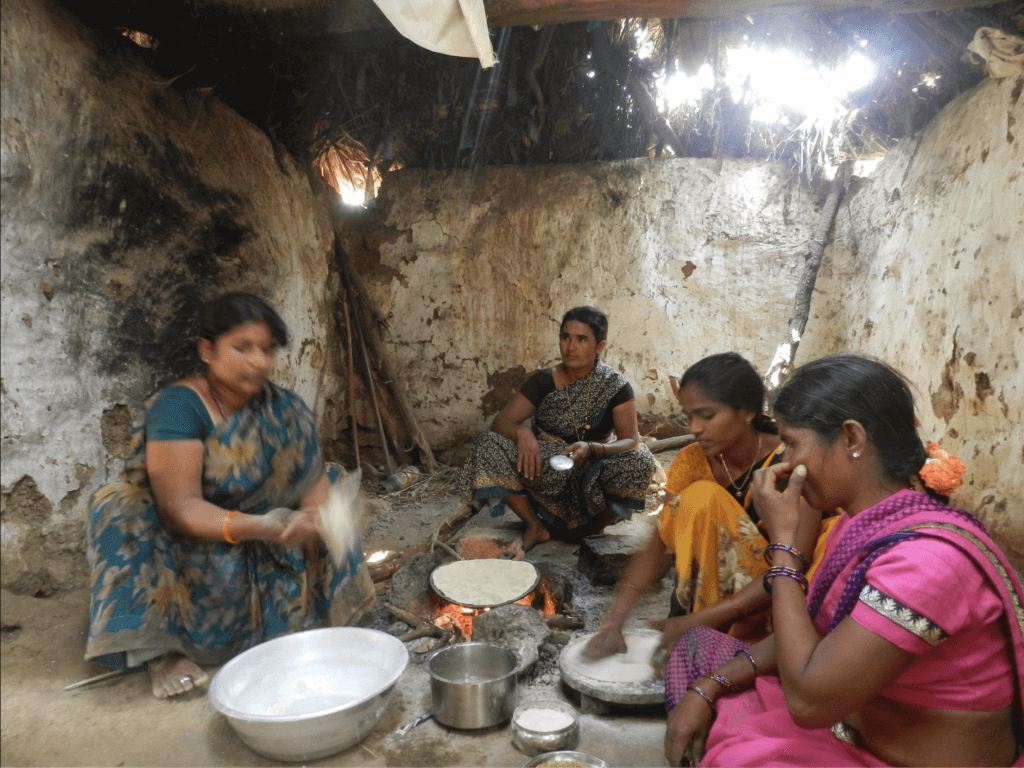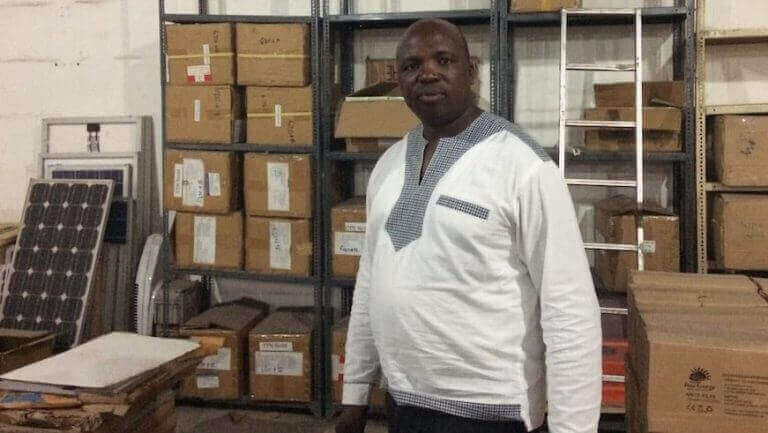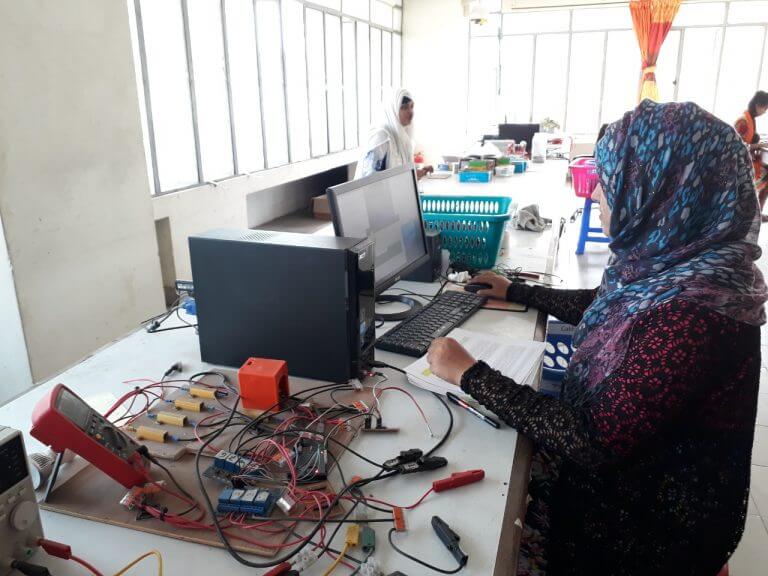It is almost 7PM and pitch dark as we enter the courtyard of Roshni’s hut in the Gonda district of Uttar Pradesh in India. Roshni’s hamlet (her name means light in Hindi) does not have access to grid electricity. She uses two LED solar lights: one in the living room and the other in the courtyard. Her kitchen is dark. She uses a rechargeable lamp when she’s cooking. As we walk around in the hamlet we notice that all the kitchens are dark. Children crowd around the white light emitted by the 2W LED bulbs to study. Some of the women use the light to teach their girls to sew.
We are surprised to see that Roshni and some of her neighbours have cooking gas (liquid petroleum gas or LPG) in their dark kitchens. As households living below the poverty line in India, they have been given free cooking gas cylinders and stoves. However, they do not have the money to refill the cylinders. Even if they did, bringing them to refilling points is a challenge. The men are away working in India’s urban megalopolises where all the jobs are, so when the cylinder is empty, the women may go back to cooking in the traditional way: with wood and cow dung. We look at the kitchen again and know that it would then be smoky as well as dark.
International development institutions have traditionally tried to address the challenges of providing clean cooking solutions for all by promoting ‘improved’ cooking stoves. These ‘improved’ stoves also use wood and organic matter and less fuels, and produce less smoke. Meera Subramanian, an environmental journalist, argues in her article Deadly Dinners that women do not find these cookstoves easy to use. They still produce harmful amounts of pollutants and are only just a little bit better than the traditional ones. Although they have gotten them for free, the tribal women we meet in Odisha are not using the cookstoves as they find them too inconvenient. Only small twigs can be fed into the stoves so the women have to do the additional work of cutting gathered wood into smaller pieces, and these small twigs burn far too quickly. This means that the stove required frequent refilling, which means even more work.
Without the means for economic empowerment, a woman’s time is not valued. Women here spend time in unpaid work such as collecting firewood or making dung cakes, and they compromise on their health and safety to ensure that their children can study and learn skills for their livelihood.

In a small village in Bihar, we meet with Anita Devi. She has grid electricity in her home, and shows us the solar panel that her family use as backup. As she makes some tea on her cooking gas stove, we notice that she also has a traditional cooking stove in her courtyard. Anita only uses the traditional cooking stove for heating large pots of milk or animal feed. On a normal day, she uses cooking gas. She does not have the time to wait around for the traditional cooking stove, as she has to rush off to her job as a teacher in a local public school.
That really is the problem. There are few employment opportunities for rural women. Roshni would really like to get a job but social norms dictate that she can only work in a place near her home, where there are no such opportunities. Without the means for economic empowerment, a woman’s time is not valued. Women here spend time in unpaid work such as collecting firewood or making dung cakes, and they compromise on their health and safety to ensure that their children can study and learn skills for their livelihood.

Electricity will provide women with employment opportunities
Decentralised renewable energy companies are the only companies working in these rural areas. They sell solar home systems to be used in individual houses or they set up microgrids that can power a cluster of houses.
In Jharkhand, we meet with Ghasni Devi, a woman who manages a rice hulling enterprise. Without regular three-phase electric power, it was not possible for her to run the rice hulling machine. The only source of livelihood available for the women in her group was construction labour, a hard job with very little security and pay. With the rice hulling enterprise, these women are now earning regular salaries which they invest back into their families. Ghasni Devi takes us around her home with pride. She shows us some of the appliances that she has been able to buy from her earnings, such as a TV, a fan and a gas stove. In the southern state of Telangana, we met single mothers who have set up tailoring shops, spice grinding enterprises and small shops. Their small kitchens were well-lit and equipped with cooking gas stoves, mixers and in some cases even electric stoves.
The Sustainable Development Clean Energy Goal (SDG 7) has two parts: providing people access to electricity, and access to cooking methods. What if these two parts were to be integrated and we could think of one solution instead of two? The company running microgrids in Uttar Pradesh needs to provide employment opportunities for young women like Roshni. The company running the microgrids in Jharkhand should be incentivised to help more women’s group such as the one run by Ghasni Devi’s startup operations. The women we met would use the gas and electric stoves which their urban sisters do. They do not need things for free. They need an opportunity to earn what they want for themselves.



